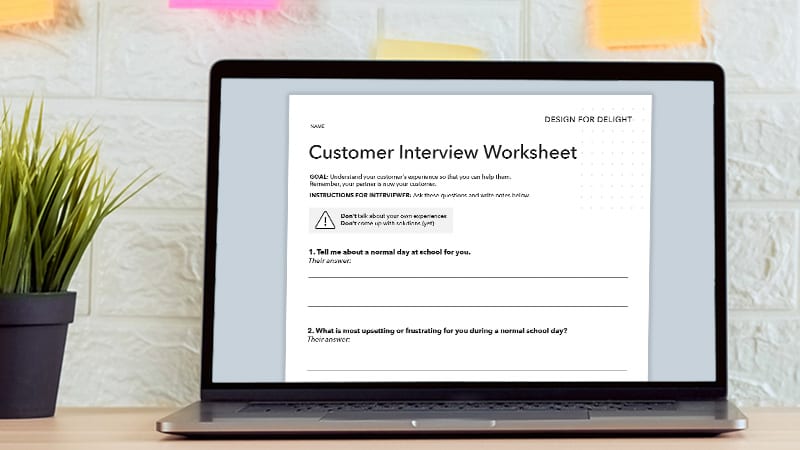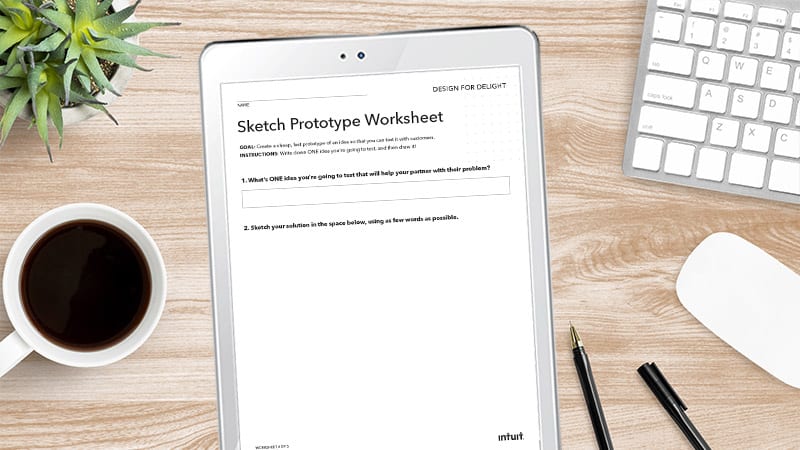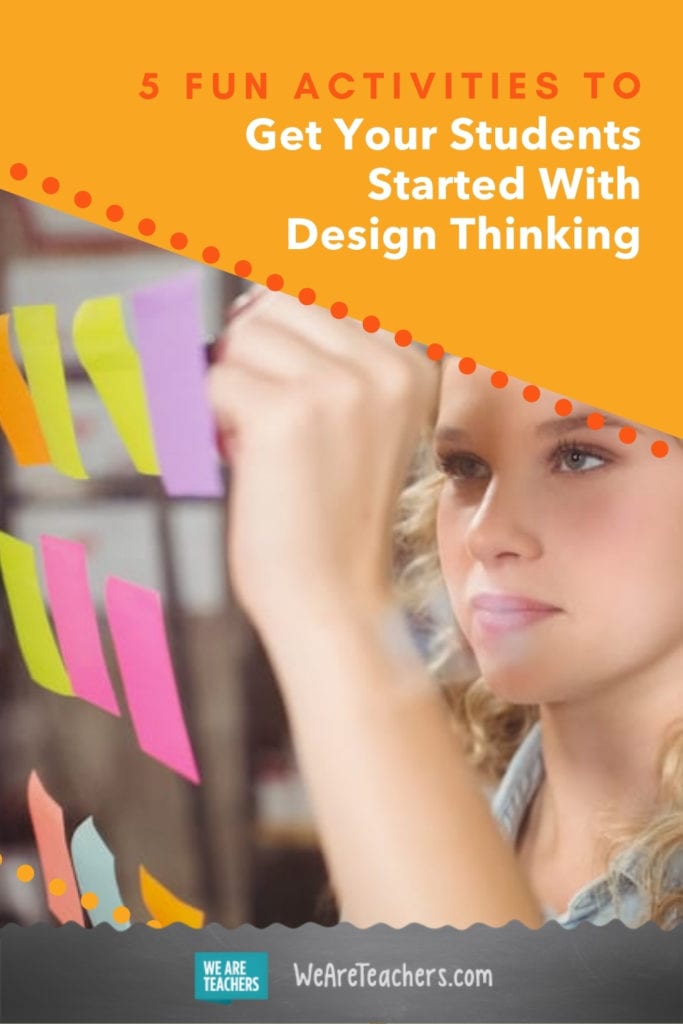We’ve all had those magic days in our classrooms where students are busy working together, and the room is full of conversation and activity. What’s the secret ingredient? Students care about the work, and it feels important. This is why we love using design thinking: students work in small teams using creative problem-solving techniques and dream up solutions that will help people. This process keeps them engaged while preparing them for the future with highly sought-after skills such as critical thinking, motivation, empathy, and collaboration. To help you get started, we’re excited to share five design thinking activities from our friends at Intuit. Added bonus: they are designed for in the classroom or online, making them easy to use no matter where class takes place.
1. Start with a creativity warm-up
To help students get into the design thinking mindset, start with a warm-up exercise. We love giving students a piece of paper with several circles drawn on the front. Then, ask them to make the blank circles into as many things as they can think of. You can share some ideas to help students get started (soccer balls, a globe, a smiley face, and a clock). Students will warm-up their creativity muscles before they jump into design thinking.
2. Conduct partner interviews to practice listening and understanding
Design thinking is about listening and understanding what people need. Before students can design a solution, they need to learn about the needs of others and the day-to-day problems that they face. In this activity, students practice observing and listening to the people they are trying to help: their classmates.

Students will work with a partner and ask three questions. There’s a place to take notes, and by the end of the activity, each student should be able to explain some of their classmates’ problems within the school.
3. Do a “Go Broad to Go Narrow” brainstorm to come up with ideas
This activity’s goal is to come up with as many ideas as possible that will be great ways to solve your classmate’s problem. Remind students that there are no good or bad ideas, and they shouldn’t worry even if their ideas seem impossible or crazy!
4. Sketch a prototype for a solution
Ask students to pick one idea from their brainstorm list, and use the “Sketch Prototype Worksheet” to sketch out their solution for their classmate. This is where students can get creative with sketch notes using pictures and doodling to dream big. The best part: students get to share their idea with their classmates.

5. Reflect … how did it go?
We love using self-assessments after we’ve taught something new. It’s a good way to get feedback from students. Use their responses to modify or change the activities for next time. Consider asking students what they enjoyed, then what they learned. Finally, ask how they can use design thinking to solve a problem their family faces at home.
If you like these activities and you are excited to try them with your students, you can find everything that you need from lesson plans, a slide deck for presenting the material, and all the handouts at Intuit Education. Click below to get your free resources!
GET YOUR FREE DESIGN THINKING ACTIVITIES



